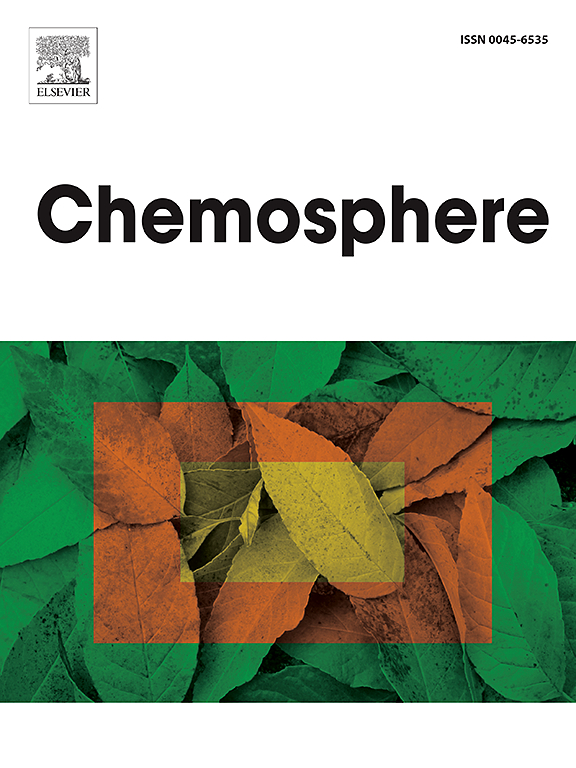Assessment of resistance and biochemical responses of tree species as a biomonitor of heavy metals pollution in an urban-industrial setting (Yasouj, Iran)
IF 8.1
2区 环境科学与生态学
Q1 ENVIRONMENTAL SCIENCES
引用次数: 0
Abstract
Air pollution, particularly from heavy metals, poses significant health and socioeconomic risks in areas of high human activity. Plants offer a potential solution for air pollution remediation and can serve as biomonitors for heavy metal concentration in regions with extensive anthropogenic activities. This research investigates the uptake and accumulation of heavy metals in tree leaves, identifies tolerant tree species for planting in sensitive areas, and evaluates biochemical markers in the leaves of seven tree species collected from six urban-industrial areas with varying pollution levels in Yasouj city, Iran. The highest mean concentrations of Ni and Cu in Ulmus umbraculifera (12.57 ± 4.96 and 13.95 ± 1.99 mg/kg) and Cd, Zn, Pb, and Cr were observed in Robinia pseudoacacia (1.86 ± 0.61), Salix alba (31.32 ± 14.29), Morus nigra (5.71 ± 3.81), and Platanus orientalis (45.06 ± 7.56) mg/kg leaves, respectively. The highest metal accumulation index and comprehensive bio-concentration index were detected in Morus nigra and Ailanthus altissima, respectively. Based on air pollution tolerance index values, Platanus orientalis, Morus nigra, and Ailanthus altissima demonstrated the highest tolerance to air pollution, while Salix alba, Ulmus umbraculifera, Fraxinus excelsior, and Robinia pseudoacacia were identified as sensitive species. The results showed trees at polluted sites exhibited higher levels of malondialdehyde and anthocyanin compared to those at unpolluted areas. The study concludes that tree plantings at various polluted sites show notable variations in heavy metal accumulation and biochemical responses to pollutants, particularly heavy metals, when compared to those from the reference site.

城市-工业环境中作为重金属污染生物监测仪的树种的抗性和生化反应评估(Yasouj,伊朗)
空气污染,特别是来自重金属的污染,在人类活动频繁的地区构成重大的健康和社会经济风险。植物为大气污染修复提供了一种潜在的解决方案,并可作为人类活动广泛地区重金属浓度的生物监测仪。本研究调查了伊朗Yasouj市6个不同污染程度的城市工业区7种树种的叶片对重金属的吸收和积累,鉴定了在敏感地区种植的耐重金属树种,并对其叶片中的生化标志物进行了评价。榆中Ni、Cu的平均浓度分别为12.57±4.96和13.95±1.99 mg/kg,而刺槐(1.86±0.61)、白柳(31.32±14.29)、桑葚(5.71±3.81)和侧柏(45.06±7.56)mg/kg的Cd、Zn、Pb、Cr的平均浓度最高。金属积累指数和综合生物浓度指数分别以桑葚和臭椿最高。根据空气污染耐受指标值,对空气污染的耐受性最高的是东方树、桑和Ailanthus altissima,对空气污染的耐受性最高的是白柳(Salix alba)、榆木(Ulmus umbraculifera)、黄曲霉(Fraxinus excelor)和刺槐(Robinia pseudoacacia)。结果显示,与未受污染地区的树木相比,受污染地区的树木显示出更高水平的丙二醛和花青素。研究得出的结论是,与参考地点相比,在不同污染地点种植的树木在重金属积累和对污染物(特别是重金属)的生化反应方面表现出显著差异。
本文章由计算机程序翻译,如有差异,请以英文原文为准。
求助全文
约1分钟内获得全文
求助全文
来源期刊

Chemosphere
环境科学-环境科学
CiteScore
15.80
自引率
8.00%
发文量
4975
审稿时长
3.4 months
期刊介绍:
Chemosphere, being an international multidisciplinary journal, is dedicated to publishing original communications and review articles on chemicals in the environment. The scope covers a wide range of topics, including the identification, quantification, behavior, fate, toxicology, treatment, and remediation of chemicals in the bio-, hydro-, litho-, and atmosphere, ensuring the broad dissemination of research in this field.
 求助内容:
求助内容: 应助结果提醒方式:
应助结果提醒方式:


